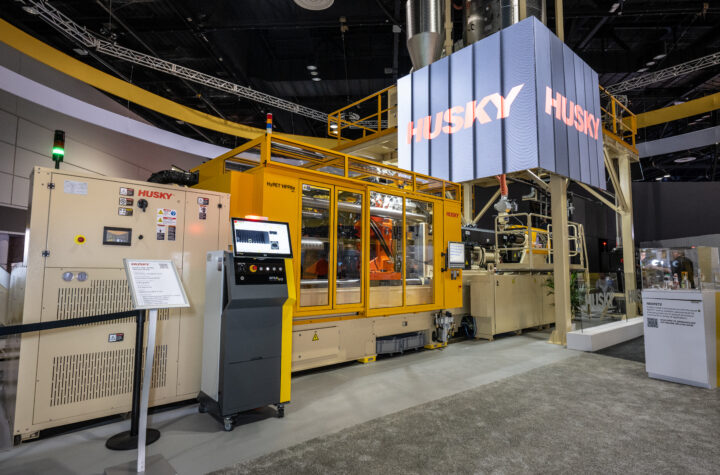An enclosed photobioreactor system for making bio oil from algae has demonstrated
yield of 32,000 gal/acre/year and $40/gal basic cost in pilot operation. Developed by partners Earl McConchie and Roger Stroud, an initial module of the system is being built in the U.S. for operation at a Manildra Group plant in New South Wales, Australia this year. The partnership operates as Algae.Tec Ltd with offices in Alaharetta, GA, USA and Perth, Australia
The system employs stacked layers of very thin passages fed with sunlight via fiber optics. The passages are sealed to eliminate any chance of contamination and also eliminate the sizeable evaporation problem associated with open pond systems. Specific strains of algae are cultivated in fresh, waste or salt water supplied with CO2 and nutrients.
Earl McConchie explains that huge supplies of waste CO2 are available at no cost from many commercial/industrial sources faced otherwise with the cost of disposing or sequestering CO2. Also, in time CO2 credits could enter the picture with added benefit to operators of McConchie-Stroud algae to oil systems. In fact, algae oil production may become a financially vital business for some operations now generating significant quantities of unwanted CO2
Asked about the capital cost aspect, McConchie said it is about $2 per gallon of installed capacity. In this connection, he points out that the current and expected
market price of petroleum could permit fast pay back of the investment helped by low algae oil production cost which, incidentally, is calculated with suitable allowance for sale of by-products including protein, glycerin, carbohydrates and biomass. CO2 credits may also become an economic factor.
Taken together, the economics of the system, without need for subsidies, could be good for the U.S. since construction, installation and operation of the system could account for many jobs and large investment in the U.S. rather than dollar outflow for foreign oil.
McConchie sees the use of standard size intermodal shipping containers modified as
cost effective modules for algae cultivation process equipment.. He sees an overall economic business unit having 500 modules each producing 250 tons of dry algae matter per year. Favorable locations will be those with the most sunlight located within 35 deg above or below the equator.
Coincidental with emergence of possible economic algae based diesel fuel, new technology diesel engines are entering the picture with advanced features such as elimination of expensive engine out NOx emissions controls achieved by Mazda’s Skyactiv D engines. The Mazda technology further improves diesel fuel efficiency by lowered compression ratio and other enhancements. Another new diesel is the remarkable EcoMotors balanced opposed 2 cylinder system with 4 pistons (per module) that reduce engine size, weight and parts count by 50%.. Diesel engine maker Navistar recently linked with EcoMotors for commercialization of the engine (the first single module is reported to have 100mm cylinder bore, 250-300 hp).
Diesel engine gains such as these put a new face on compression ignition which improves the outlook for diesel fuel more easily made from algae than gasoline.
In the overall picture, domestic bio fuel production has the potential to improve U.S. environmental quality, national economic health, employment, energy security and reduction in the huge military expense needed for protection of imported oil shipping lanes. The military expense factor runs the real cost of petroleum substantially higher than the current market price of around $100/bbl; never mind the cost of unemployment, debt servicing and other consequences of purchased vs. home made
bio oil.














































 Ai interview with the new spokesperson of the AUTOSAR Cooperation, Alain Gilberg
Ai interview with the new spokesperson of the AUTOSAR Cooperation, Alain Gilberg



